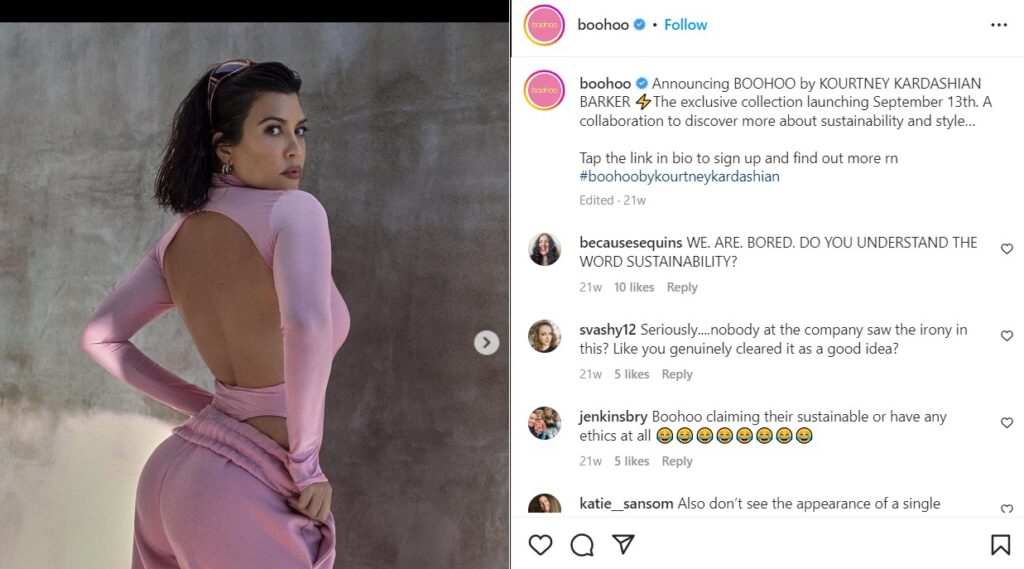How to choose the right influencer for your brand?
In 2004, Facebook made its debut and shook the advertising, PR, and marketing industries to their core. What began as a platform to connect people transformed into a popular commercial hub for businesses. Six years later, in 2010, Instagram was introduced and only amplified the game-changing impact of social media on the aforementioned fields.
It’s a well-known fact that referral marketing is one of the most effective forms of advertising. To capitalise on this, an increasing number of brands are tapping into the power of Instagram content creators for their marketing campaigns. These influencers offer a unique and personalised perspective that sets them apart from the typical TV advertising approach. Brands must exercise caution and make a thorough, well-informed decision when choosing a content creator, as their endorsement carries significant weight.
The concept of influencer marketing can be complex, leading to numerous inquiries. To clarify and demystify the subject, I’ve gathered a selection of the most commonly asked questions that I encounter in my daily interactions.
1. Is there compatibility between the content and values of the influencer’s platform and my business?
A company’s brand and image are essential in achieving its business objectives. It’s, therefore, imperative to exercise caution when selecting individuals to represent the brand. Take, for instance, an environmentally conscious company for which sustainability is a top priority. This company would not want to partner with an influencer who, despite having made a few eco-friendly statements, actively promotes fast fashion brands. The ideal influencer partners are those whose values align with the company.
example: boohoo x kourtney kardashian
A recent case in point is the American fast fashion brand Boohoo’s collaboration with Kourtney Kardashian, who was appointed brand ambassador to steer the company towards a more sustainable fashion direction. However, this move was met with widespread criticism. This was in part due to the fact that the wealthy and well-known public figure is not known for leading an environmentally conscious lifestyle, frequently using private jets and exhibiting a high level of consumption. Despite facing ongoing public pressure for its harmful environmental practices, Boohoo could have improved its image with regard to sustainability by choosing a more appropriate influencer. Instead, their selection of the wrong influencer resulted in further harm to their reputation.
Read more about the case here.

2. Why is communication between the brand and influencer important?
The importance of clear communication in influencer marketing partnerships cannot be overstated. A lack of clear expectations and guidelines can lead to misunderstandings and dissatisfaction on both sides. It is imperative that companies provide a comprehensive brief to their influencer partners, outlining the content, parameters, and conditions of the collaboration. This sets the foundation for a productive and successful partnership. Failing to effectively communicate can result in unmet expectations and dissatisfaction with the partnership.
The Key to Successful Collaboration: A Guide for Brands
Collaborating with influencers can be a great way to reach a wider audience and promote a product or brand, but it’s important to have clear communication to ensure success. Here are some guidelines for brands to follow to have a successful collaboration with an influencer:
- Precision is Key: When outlining the collaboration, be as detailed as possible about the content of the post, the level of creative freedom for the influencer, and the conditions they must follow. This helps to manage expectations and prevent misunderstandings down the line.
- Approval Process: Make it clear from the outset that the client must approve the content before it is posted to avoid factual errors and ensure the idea is coherently understood.
- Content and Channels: Agree on the specific content of the post and the social media channels where it will be shared.
- Scope of Collaboration: Clearly define the number of posts and stories the influencer will create, and have a clear understanding of their pricing structure.
- Copyright Matters: If the post uses music and is a paid collaboration, make sure to pay attention to copyright issues.
- Use the Product: When promoting a product, it’s more credible if the influencer actually uses it in the post, rather than just holding it.
- Hashtags and Usernames: Include the exact usernames and hashtags the influencer needs to include in the post.
3. Why is it so expensive to work with influencers?
Collaborating with influencers on Instagram is not unlike buying advertising space from online media outlets. Just as advertisements appear alongside website articles, influencers promote products and services on their social media channels and receive compensation for their efforts. With the time and effort influencers put into creating and publishing posts, it’s reasonable for them to charge for their services. Furthermore, working with influencers provides companies with a sense of security and a written agreement outlining their expectations.
In some cases, influencers may agree to promote products in exchange for the items themselves, but this is typically only feasible when the products are expensive. The cost of working with influencers in Estonia may vary, and companies may find that influencers in Latvia and Lithuania charge less for their services. For companies with a target market spread across the Baltic States, exploring collaborations with Latvian and Lithuanian influencers may be worth considering.
4. When to enter into long-term cooperation?
Long-term partnerships between companies and influencers can contribute to building brand loyalty. Consistent collaborations demonstrate the partnership’s effectiveness and stability, making it more beneficial for both parties than constantly changing influencer partners. For example, if a telecommunications company works with different influencers each month, the brand may lack continuity and stability. On the other hand, if a company invests in a year-long partnership with a single influencer, the influencer will become more familiar with the brand, leading to a more natural and effective partnership.
Investing in long-term collaborations with influencers can also save time and money in the long run. Companies won’t need to repeatedly explain their brand’s values and objectives, and the influencer will gain a deeper understanding of the brand over time.
example: tele2 x mihkel raud
Our client Tele2, a leading telecommunications provider, has demonstrated the power of long-term collaboration in its partnership with influencer Mihkel Raud. Raud has been a prominent figure in Tele2’s “hardware” section of their blog, providing his followers with exciting and informative reviews of the company’s products and services. This dedicated contribution to the brand has not only built anticipation among Raud’s followers but has also solidified his position as a trusted influencer and Tele2 customer. This seamless integration of brand and influencer has resulted in a more authentic and confident impact on the target audience, solidifying the success of the long-term collaboration by repeatedly explain their brand’s values and objectives, and the influencer will gain a deeper understanding of the brand over time.

5. What are the numbers that bring success when working with influencers?
The notion that partnering with an influencer with a large following is a recipe for success is often misleading. In reality, the number of followers is not a reliable indicator of success in influencer marketing. Instead, the engagement rate, or the level of interaction between the influencer and their audience, is a key metric to consider. In Estonia, there are instances where influencers have tens of thousands of followers but exhibit a low engagement rate of 0%.
The rapidly changing algorithms of Instagram make it increasingly difficult to stay abreast of trends in the industry. Buying followers, prevalent on the platform, can contribute to an influencer’s low engagement rate. However, this should not automatically disqualify a potential collaboration, as the influencer may still resonate well with the target audience. It’s essential to take a holistic approach and consider the bigger picture. Companies can also request the influencer’s engagement rate or use influencer marketing platforms to measure their statistics.
example: maria rannaväli x buying followers
In Estonia’s influencer landscape, one example of the pitfalls of relying solely on followers as a success metric is the story of Maria Rannaväli. One of Estonia’s biggest influencers had 64,000 followers, but a malicious individual bought more followers to her account, raising the count to 400,000. The impact of this artificial increase in followers was significant, as the engagement rate plummeted when dividing likes, comments, and views by the new, inflated number of followers. This serves as a cautionary tale for brands, highlighting the importance of looking beyond simple follower counts.
Read more about the case here.

6. How to analyse the effectiveness of cooperation?
Once a collaboration with an influencer has been established, you have to evaluate its results. Measuring the impact of influencer marketing is one of the few concrete ways of determining the effectiveness of a communication strategy. E-commerce and promotional code data provide tangible metrics for success, but every brand has different goals for its influencer marketing campaigns. To fully assess the impact of a partnership, it’s recommended to gather post statistics from the influencer a few weeks after the content has been published. Analyse the engagement, clicks, and performance of links and promotional codes. To gain valuable insights and optimise future campaigns, it’s essential to compare the results over an extended period of time and determine what’s resonating with the target audience.


